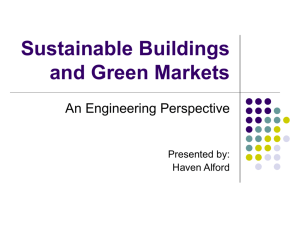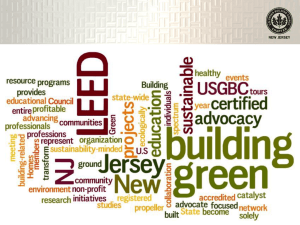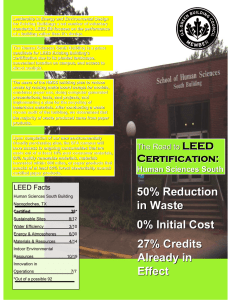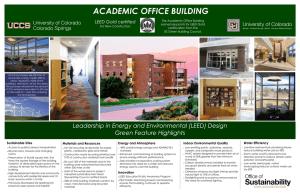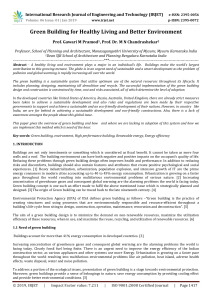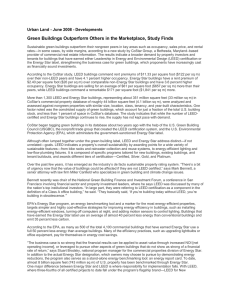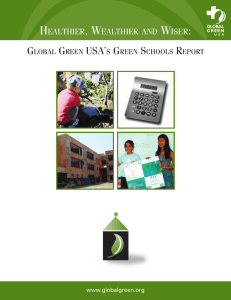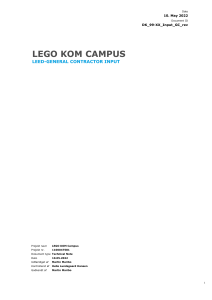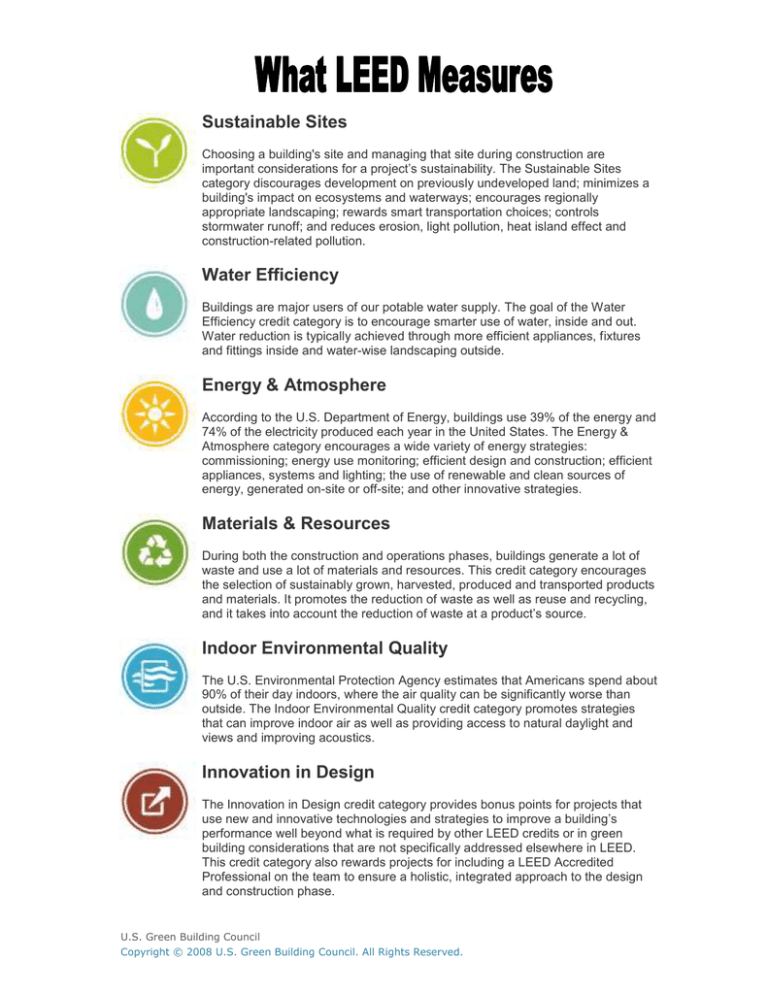
Sustainable Sites
Choosing a building's site and managing that site during construction are
important considerations for a project’s sustainability. The Sustainable Sites
category discourages development on previously undeveloped land; minimizes a
building's impact on ecosystems and waterways; encourages regionally
appropriate landscaping; rewards smart transportation choices; controls
stormwater runoff; and reduces erosion, light pollution, heat island effect and
construction-related pollution.
Water Efficiency
Buildings are major users of our potable water supply. The goal of the Water
Efficiency credit category is to encourage smarter use of water, inside and out.
Water reduction is typically achieved through more efficient appliances, fixtures
and fittings inside and water-wise landscaping outside.
Energy & Atmosphere
According to the U.S. Department of Energy, buildings use 39% of the energy and
74% of the electricity produced each year in the United States. The Energy &
Atmosphere category encourages a wide variety of energy strategies:
commissioning; energy use monitoring; efficient design and construction; efficient
appliances, systems and lighting; the use of renewable and clean sources of
energy, generated on-site or off-site; and other innovative strategies.
Materials & Resources
During both the construction and operations phases, buildings generate a lot of
waste and use a lot of materials and resources. This credit category encourages
the selection of sustainably grown, harvested, produced and transported products
and materials. It promotes the reduction of waste as well as reuse and recycling,
and it takes into account the reduction of waste at a product’s source.
Indoor Environmental Quality
The U.S. Environmental Protection Agency estimates that Americans spend about
90% of their day indoors, where the air quality can be significantly worse than
outside. The Indoor Environmental Quality credit category promotes strategies
that can improve indoor air as well as providing access to natural daylight and
views and improving acoustics.
Innovation in Design
The Innovation in Design credit category provides bonus points for projects that
use new and innovative technologies and strategies to improve a building’s
performance well beyond what is required by other LEED credits or in green
building considerations that are not specifically addressed elsewhere in LEED.
This credit category also rewards projects for including a LEED Accredited
Professional on the team to ensure a holistic, integrated approach to the design
and construction phase.
U.S. Green Building Council
Copyright © 2008 U.S. Green Building Council. All Rights Reserved.


